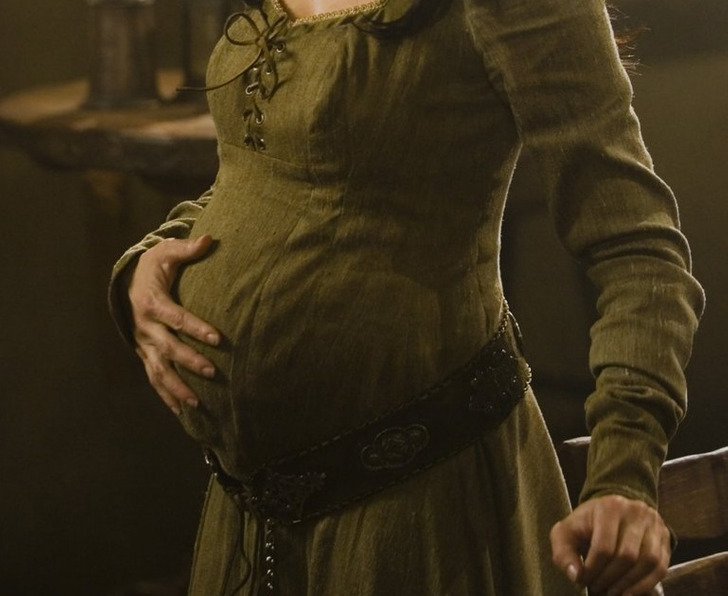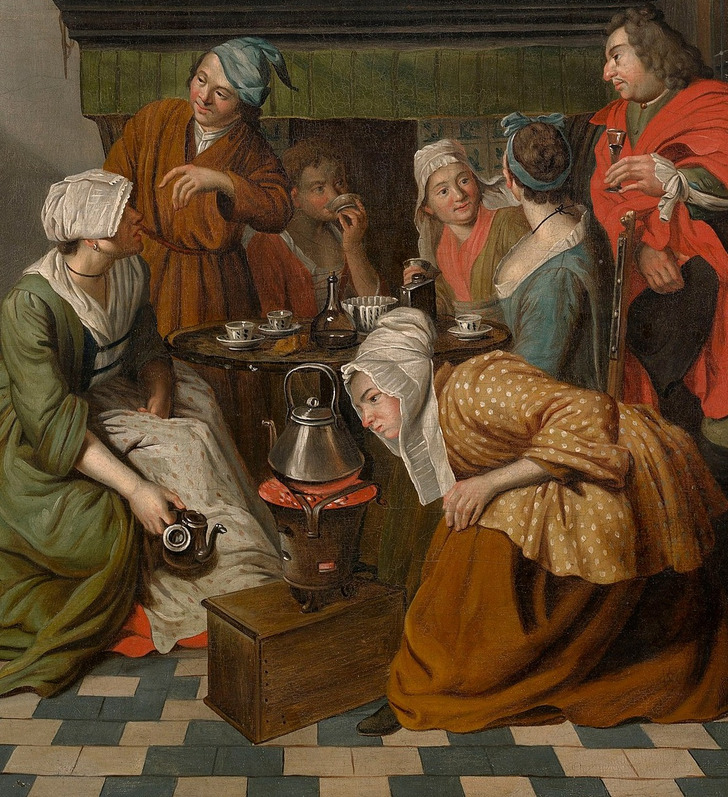13 Myths About Pregnancy Our Ancestors Believed In, and Today, They Seem Wild

Even today, having a baby may be a true challenge for a future mom. But in the past, before the development of all sorts of medical technology, expecting a baby and giving birth were a big feel. Of course, in the past, people also wanted to give the best care possible to the woman and the baby, even though, these methods look shocking today.
We at CHEERY decided to find out what pregnancy myths our ancestors believed in, and what difficulties women had to deal with before and after giving birth.
Many women often had no idea they were going to become mothers soon.
Before the appearance of modern pregnancy tests, women would find out they were pregnant only by the 4th or 5th month when the baby would start moving. The absence of periods was not a reliable indicator because periods are affected by illness, feeding other babies, and even malnutrition. Noble women could ask a doctor, but it was kind of pointless.
The ancient myths of diagnosing pregnancy don’t look very reliable today, even though the same material was used for the test. Doctors would leave a needle in the glass full of the patient’s urine and try to detect pregnancy based on the rust. The situation didn’t change much in the 19th century. Ladies would mostly rely on how they felt and if they had morning sickness.
Being pregnant for 11 months was considered normal.
A baby was supposed to be born in a legal marriage only, especially if it was a boy. This is why doctors would often say a woman could be pregnant for almost a year.
If it was a question of a lady’s honor, they would protect it in any way possible. So, when the owner of the estate would die unexpectedly, nobody was amazed that his wife was pregnant for 11 months. She had to give birth to the heir.
It’s not surprising that people believed this. Many people didn’t doubt that a woman could have several children within 1 year.
If a lady was expecting a baby, people couldn’t throw strawberries at her.
For centuries, there were a lot of superstitions around pregnancy. Women didn’t know anything — the sex of the baby, it’s health condition , and how the labor would go. So, they needed at least some certainty. There were a lot of things women were recommended to do and not to do.
People couldn’t throw strawberries or cherries at pregnant women, or the baby would be born with red spots. No sharp objects, such as knives or swords, could be shown. But if this couldn’t be avoided, the woman had to be touched on the head with the blunt side of the blade, so that the future baby would be brave.
To find out the sex of the future child, people would put salt on the woman’s head.
The sex of the future baby really mattered, so parents did everything they could to know it in advance. There were several methods. For example, put some salt on the sleeping woman’s head. The first name the woman would say in the morning would determine the sex of the baby.
For a long time, doctors thought that the sex of the baby depended on the mother and the woman could change it before the labor. This is why noble women were given different objects with boys on them. And ladies needed to concentrate on giving birth to a strong boy.
To make pregnancy and labor go well, women would wear special belts.
To make the pregnancy go easy, women would wear belts. Scientists are still not sure how they fixed them. Most likely, one of them would go across the belly, and one would be along it. This construction would not only give physical support to women, but also psychological comfort.
The belts had drawings on them, and some honey, egg, and milk marks. It’s possible that they wouldn’t remove them until the baby was born. It was supposed to help having a good labor. Women also held cheese and butter during labor to facilitate the process.
Before the big day, false ceilings were installed in the bedroom.
In the Middle Ages, noble women would hide themselves around a month before they were due. The bedroom needed to be prepared in advance because bright light and drafts could harm the lady.
They closed their window shutters, removed the tapestries with animals, otherwise, their imagination would be too active and harm the baby. The fireplace would be burning for 30 days, people would only whisper around the pregnant woman. In some cases, a false ceiling would be installed to make the place not only dark and warm, but also cozy.
The right hair played a big role.
In the 19th century, preparing for a labor was not an easy task. Before the big moment, women needed to take care of their hair. In the Victorian era, women would often grow long hair that could get entangled and the only way they could brush them was with a needle.
The hair should be parted in the middle at the back, firmly braided in two tails and tied, so it will not come unloosed. After birth, the woman would change clothes, drink something hot, and stay alone. People couldn’t talk to her until she got plenty of sleep. Talking to friends and relatives could do serious harm to her health.
Labor could turn into a fun party.
In the 18th and the beginning of the 19th century, having a baby was a great reason for a party. In rural areas, people would invite all of their neighbors. While the future mother would be in the bedroom, women would be making foods and drinks, discussing local gossip and preparing for a new baby. And after the labor, they would gather in the bedroom, taking care of the woman and the baby, sharing their experiences.
And noble people would go to the capital to give birth. They would even make newspaper announcements about it. A pregnant woman’s mother, a sister or two, a close maid and a few female friends would all be invited to serve as attendants or “gossips.” Men could sometimes attend a birth, too.
Young mothers would get beautiful trays as gifts.
In Italy, during the Renaissance period, birth of a child was not only happiness for the family, but also for the country. This is why some noble women would get birth trays for their hard work. Originally, the trays were used to serve food and drinks when they were resting after giving birth. Later, the trays were replaced with wooden cups. These objects would become family relics and people would store them carefully.
Choosing a wet nurse was an important matter.
Not all women could breastfeed their babies, so some families had to hire a wet nurse. Doctors recommended this only as a last resort, because the baby could get the woman’s temper through the milk.
Only the most honest, happy, and healthy women with high moral foundations would be chosen as wet nurses. Such a woman would take care of the child until the age of 3. All this time, the woman would have to be very careful about her personal life, because if she got pregnant, she would be fired. And wet nurses couldn’t have been ginger haired. Women with such hair were considered hot-tempered.
Babies were swaddled not only to limit their movements.
Babies were treasures for the family. This is why the needed to be warm and comfortable. They would be wrapped in a blanket with thin ribbons on the top. These would prevent the babies from slipping out.
Besides, some doctors thought that such bandages would keep the babies’ arms and legs straight. People believed that their bones were soft and could bend without enough support.
Noble families hired rockers to take care of their babies.
Both peasants and noble people had baby beds. But noble children would be in wooden and richly decorated beds, while poor children would sleep in simple baskets. In order to prevent babies from falling out, they were fixed with belts.
But even in the past, children wouldn’t sleep until they were rocked. A child that was screaming a lot was believed to be a changeling, by superstitious people To calm babies down, rich people would hire rockers, that would rock the bed.
Babies were hidden under veils.
At the end of the 19th centuries, baby veils became popular. To protect the tender skin from bad weather, dirty air, and bright sun, mother would wrap their babies’ faces in veils, made from wool, lace, or silk. Children would walk with them on up to the age of 4. Many doctors were against the veils because they did more harm than good.
Which of these traditions seemed the most absurd to you?

















